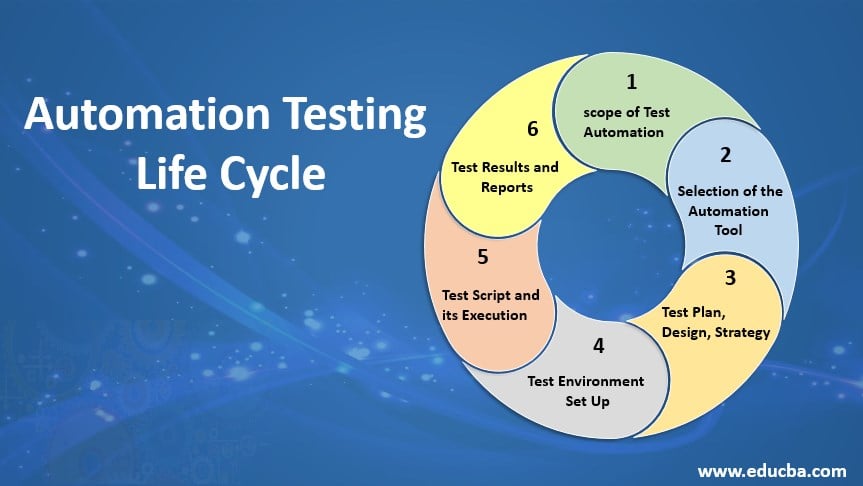Just How Automation Testing Changes Quality Assurance Processes
From Handbook to Automated Screening: A Comprehensive Guide to Transitioning Smoothly and Successfully
In the realm of software testing, the shift from guidebook to automated procedures has come to be an increasingly crucial change for companies looking for to improve efficiency and accuracy in their screening practices. The trip from manual to automated screening is not without its difficulties, but when approached purposefully and with a clear strategy in mind, the benefits can be substantial.
Advantages of Automated Checking
Automated screening provides many advantages, boosting effectiveness and accuracy in software application growth procedures. Automated tests can be run all at once on multiple devices and operating systems, considerably speeding up the screening stage compared to manual testing.
In addition, automated screening ensures a higher level of accuracy in identifying defects. Considering that automated examinations follow predefined scripts, human error is lessened, bring about more reliable test results. Consistency in screening is additionally boosted, as automated examinations execute the same actions exactly each time they are run. This uniformity is essential in making certain that all performances of the software application are extensively evaluated, decreasing the possibility of undiscovered bugs slipping through to manufacturing.
Picking the Right Devices

First of all, analyze your purposes and requirements. Comprehend the range of your task, the innovations involved, and the capability of your group. This evaluation will help you establish the abilities and attributes you need in your screening tools.
Secondly, take into consideration the compatibility of the devices with your existing systems and procedures. Smooth assimilation with your existing software program development lifecycle is important to guarantee a smooth shift to automation.
Furthermore, examine the scalability and versatility of the tools. As your testing needs advance, the devices need to have the ability to adjust and suit modifications efficiently.
Last but not least, consider the support and area around the tools. When carrying out automated testing, durable support and an active user area can supply important sources and help. By very carefully thinking about these elements, you can select the right devices that line up with your requirements and established the phase for a successful transition to automated screening.
Composing Efficient Test Manuscripts

When crafting test manuscripts, it is important to consider the details needs of the software application being evaluated and make sure that the scripts deal with all important functionalities. Clear and detailed naming conventions for examination manuscripts and test situations can improve readability and maintainability. In addition, integrating error handling systems within the examination scripts can help in recognizing and dealing with issues without delay.
Moreover, organizing examination scripts right into modular parts can improve reusability and scalability, reducing redundancy and boosting efficiency in examination script upkeep. Routine reviews and updates to test manuscripts are essential to keep speed with evolving software program needs and functionalities. By adhering to these concepts, testers can my blog create robust and reliable examination scripts that contribute dramatically to the success of automated testing processes.
Integrating Automation Into Workflows
By perfectly incorporating automated screening tools like Selenium or Appium right into the software application development lifecycle, groups can achieve faster feedback on code adjustments, leading to quicker pest detection and resolution. This integration allows for continual screening throughout the growth procedure, making sure that any issues are identified early on, resulting in greater software program top quality. Correct combination of automation tools calls for cooperation between advancement, screening, and operations teams to develop a unified operations that maximizes effectiveness and effectiveness in supplying high-grade software program products.
Ensuring a Smooth Change
Efficiently transitioning to automated testing entails precise planning and mindful execution to reduce disruptions and take full advantage of efficiency in the software application development process - automation testing. To ensure a smooth change, it is necessary to start by performing a detailed assessment of the present screening processes and determining areas where automation can bring the most significant advantages. Engaging with all stakeholders beforehand at the same time, including developers, testers, and task supervisors, is important for garnering assistance and buy-in for the automation initiative
Communication is crucial throughout this shift phase. Clear communication of the objectives, advantages, and expectations of automated screening helps to take care of any resistance or issues that might occur. In addition, offering adequate training and resources for employee to upskill in automation devices and strategies is vital for making sure a successful change.

Final Thought
In verdict, transitioning from manual to automated testing uses various benefits, consisting of enhanced performance and reliability. By choosing the ideal devices, composing efficient examination scripts, and incorporating automation flawlessly into process, companies can make certain a effective and smooth change. It is vital to welcome automation as an important possession in software program screening procedures to boost general top quality and productivity.
In the world here are the findings of software testing, the shift from guidebook to automated procedures has actually become a progressively crucial change for companies looking for to boost performance and accuracy in their testing practices. Automated tests can be run all at once on multiple devices and running systems, drastically speeding up the screening stage contrasted to hand-operated testing. Consistency in screening is additionally boosted, as automated examinations implement the very same actions exactly each time they are run.To guarantee the successful execution of chosen testing devices, the development of efficient test scripts plays a vital browse this site role in validating the capability and performance of automated processes - automation testing. By adhering to these concepts, testers can create reliable and durable test scripts that contribute significantly to the success of automated screening procedures